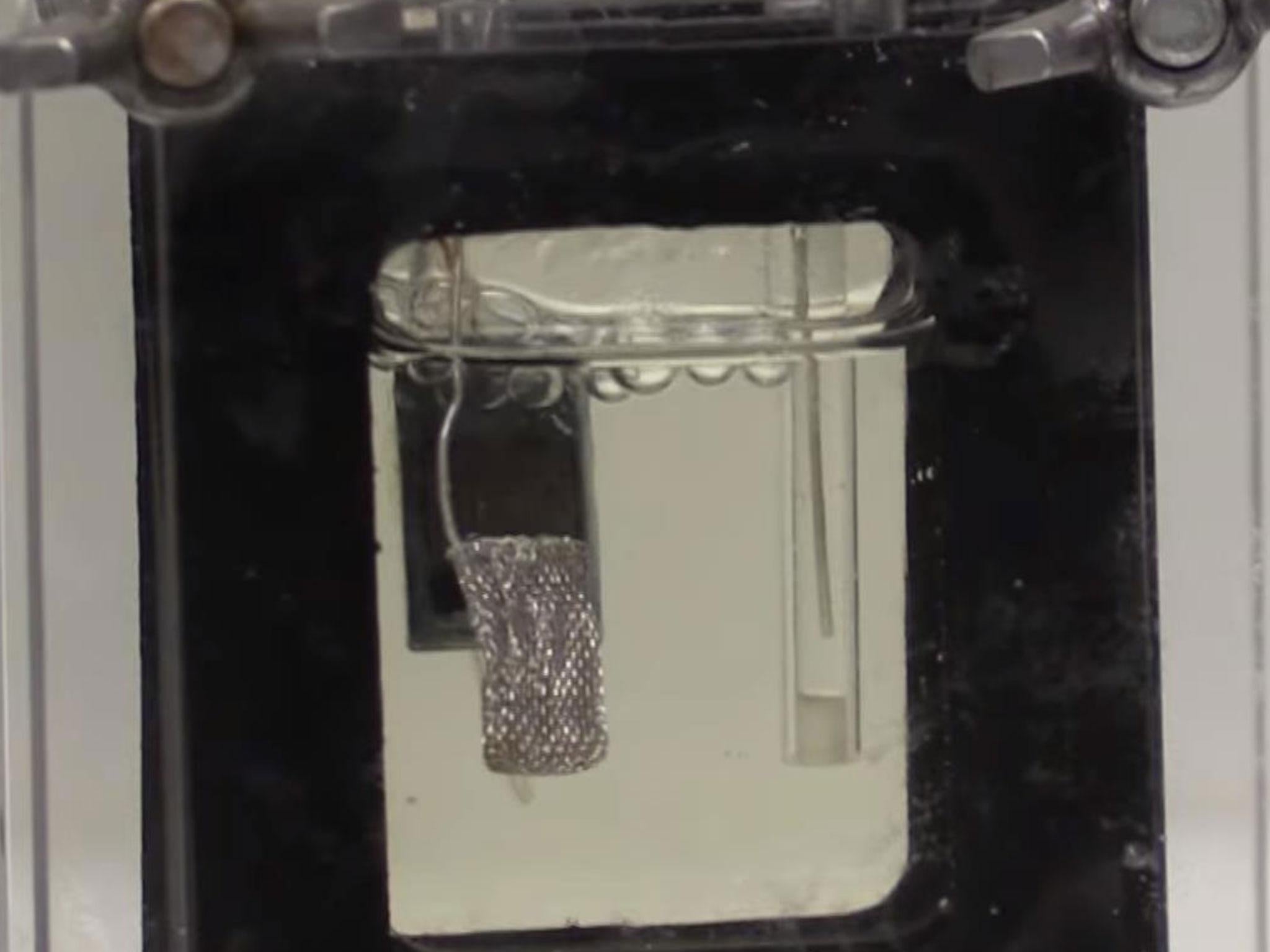Scientists accidentally turn pollution into renewable energy
‘Carbon dioxide is a problem right now. If we can use it, then we’re preventing it from going into the atmosphere’

Your support helps us to tell the story
From reproductive rights to climate change to Big Tech, The Independent is on the ground when the story is developing. Whether it's investigating the financials of Elon Musk's pro-Trump PAC or producing our latest documentary, 'The A Word', which shines a light on the American women fighting for reproductive rights, we know how important it is to parse out the facts from the messaging.
At such a critical moment in US history, we need reporters on the ground. Your donation allows us to keep sending journalists to speak to both sides of the story.
The Independent is trusted by Americans across the entire political spectrum. And unlike many other quality news outlets, we choose not to lock Americans out of our reporting and analysis with paywalls. We believe quality journalism should be available to everyone, paid for by those who can afford it.
Your support makes all the difference.Scientists have accidentally discovered a way to reverse the combustion process, turning carbon dioxide back into a fuel.
Researchers at the Oak Ridge National Laboratory in the US used complex nanotechnology techniques to turn the dissolved gas into ethanol.
Because the materials used are relatively cheap, they believe the process could be used in industrial processes, for example to store excess electricity generated by wind and solar power.
The researchers had hoped the technique would turn carbon dioxide into methanol, but ethanol came out instead.
Dr Adam Rondinone, lead author of a paper about the experiment that was published in the journal ChemistrySelect, said: “We’re taking carbon dioxide, a waste product of combustion, and we’re pushing that combustion reaction backwards with very high selectivity to a useful fuel.
“You can use it [ethanol] in the current vehicle fleet, right now, with no modifications.
“Carbon dioxide is a problem right now. If we can use it, then we’re preventing it from going into the atmosphere.”
The team made a catalyst made from carbon, copper and nitrogen and an electric current was then used to trigger a reaction.
They had expected the process to be much more complicated.
“We discovered somewhat by accident that this material worked,” Dr Rondinone said.
“We were trying to study the first step of a proposed reaction when we realised that the catalyst was doing the entire reaction on its own.
“Ethanol was a surprise. It’s extremely difficult to go straight from carbon dioxide to ethanol with a single catalyst.”
The solution of carbon dioxide dissolved in water was turned into ethanol, with a yield of 63 to 70 per cent.
“That means that of all the carbon dioxide and electricity going into it, you don’t waste much of it. The majority of it ends up converted into ethanol,” Dr Rondinone said.
The researchers are now working to improve the efficiency of the process and find out more about the catalyst’s properties.
It consists of copper nanoparticles embedded in tiny carbon spikes, described as “lightning rods” that concentrate the electrochemical reaction at their tips, which are just a few atoms thick.
“A process like this would allow you to consume extra electricity when it’s available to make and store as ethanol,” Dr Rondinone said.
“This could help to balance a grid supplied by intermittent renewable sources.”
The work was part funded by the US Department of Energy’s Office of Science.
Join our commenting forum
Join thought-provoking conversations, follow other Independent readers and see their replies
Comments